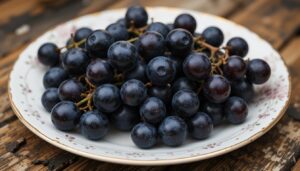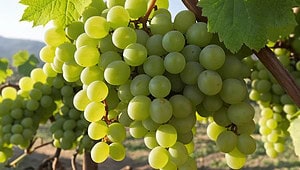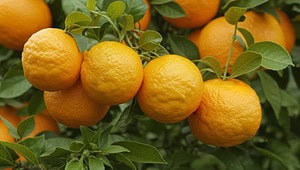Table of Contents
Vitaceae Fruits: Flavorful, Colorful, and Nutritious

Vitaceae fruits are one of the most important fruit families. They are part of a diverse botanical family known for their wide distribution and significant role in both human consumption and agriculture. Grapes are the most prominent members of this family, cultivated globally for fresh eating, wine production, and various culinary applications. However, Vitaceae fruits extend beyond grapes, including species like muscadines and lesser-seen varieties like fox grapes, each offering unique characteristics and benefits. The appeal of these fruits often lies in their balance of sweetness and acidity, making them versatile for various uses.
Grapes, in particular, have gained recognition not only for their taste but also for their rich composition of antioxidants, such as resveratrol, which is associated with potential health benefits, including improved cardiovascular health. Muscadines, native to the southeastern United States, are known for their thick skins and robust flavor, making them popular for jams and jellies, though they have yet to achieve the global status of more familiar grapes.
While the popularity of certain Vitaceae fruits is undeniable, it is crucial to recognize the ecological importance of the entire Vitaceae family. These plants contribute to biodiversity, support pollinators, and, in their natural habitats, serve as critical components of ecosystems. The cultivation of grapes, especially for wine, also raises discussions about sustainable farming practices and water usage, given the environmental impact of large-scale vineyards. Advocates for more sustainable methods argue for the necessity of innovation in agriculture, such as drought-resistant grape varieties or organic growing techniques.
Exploring Vitaceae fruits means appreciating their cultural significance, nutritional value, and the ecological challenges surrounding their production. While they may be celebrated in many cultures for their flavors and adaptability, there remains a need to balance agricultural practices with environmental stewardship, ensuring these fruits continue to be enjoyed by future generations.
In this article, we are going to discuss 8 Vitaceae fruits – from Grapes to other unique varieties.
1. Vitaceae Fruits: Common Grapes
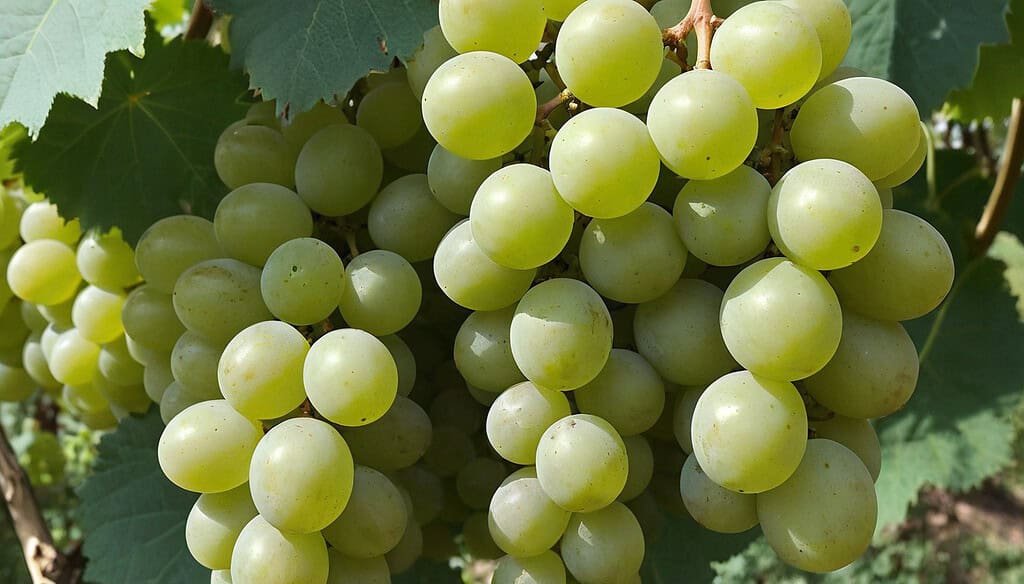
Common grapes are the most widely recognized and cultivated of all Vitaceae fruits. They are the quintessential fruit in the Vitaceae family, known for their extensive range of varieties and uses. These grapes are enjoyed fresh, dried into raisins, or used in the production of wine, juices, and jellies. Grapes are available in an array of colors such as green, red, black, and purple, with each color offering a unique flavor profile. The most popular varieties, such as the Thompson Seedless, are seedless and highly favored for snacking, while seeded varieties like Concord are often used for wine production or made into juices.
The cultivation of common grapes is a worldwide industry, spanning from temperate climates in Europe and North America to more subtropical regions. Grape vines thrive in well-drained soil and require a significant amount of sunlight and careful management of water and nutrients. The harvesting of grapes is a labor-intensive process, with the timing being crucial to ensure optimal ripeness for both fresh consumption and processing. Beyond their delightful taste, grapes offer several health benefits, thanks to their rich content of antioxidants, vitamins, and minerals. These include vitamin C, vitamin K, and a variety of polyphenols, which have been linked to improved cardiovascular health and a reduction in the risk of chronic diseases like diabetes and cancer.
While common grapes are immensely popular for their sweet, juicy texture and diverse applications, their cultivation faces some challenges. Pests, diseases, and climate conditions can significantly impact yield and quality. Additionally, the environmental footprint of grape farming, particularly in large-scale commercial vineyards, has led to increased interest in sustainable farming practices. Organic farming, water-efficient irrigation systems, and innovations in pest management are all being explored to ensure the long-term viability of common grape cultivation. As Vitaceae fruits, grapes are an integral part of the agricultural economy and continue to evolve to meet the demands of both consumers and the environment.
2. Vitaceae Fruits: Muscadines
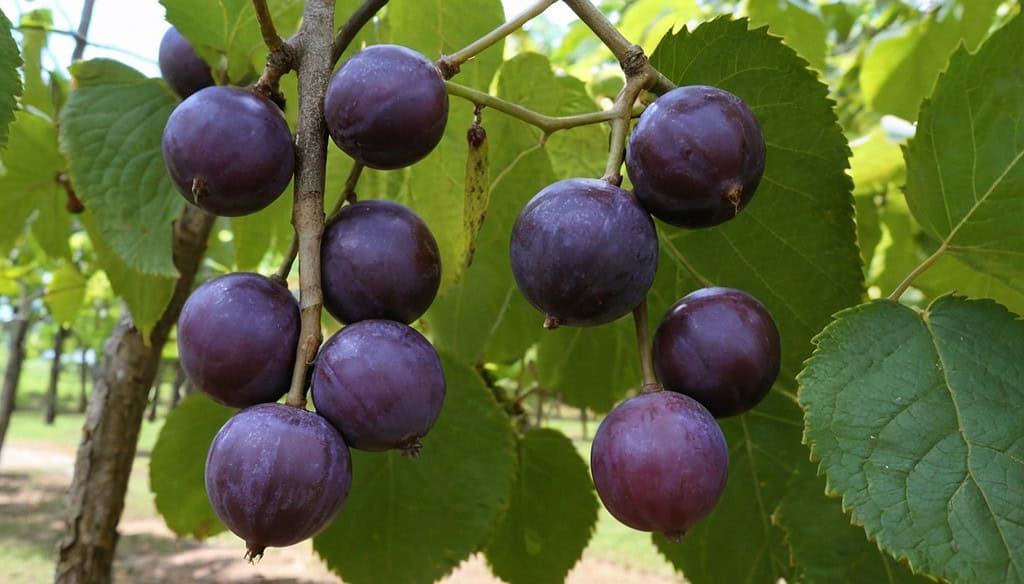
Muscadines are another important variety of Vitaceae fruits, native to the southeastern United States. These grapes are well known for their thick skins, which often give them a distinct, slightly spicy flavor that sets them apart from common grapes. Muscadines are typically dark purple or bronze in color, and their skins are edible, although tougher compared to the more delicate skin of common grapes. Muscadines thrive in the humid, warm climates of the southeastern U.S., making them less adaptable to colder climates but ideal for the regions in which they grow.
The flavor of muscadines ranges from sweet to tart, and their thick skin provides a robust taste that is often described as musky, hence the name. Muscadines are also notable for their larger size compared to common grapes, with some varieties growing to the size of a small marble. Their higher sugar content and distinct flavor make them ideal for making wine, jams, jellies, and other preserves. Muscadine wine, in particular, has gained popularity due to its unique taste, often characterized by its intense sweetness and slight tanginess.
In addition to their distinctive flavor, muscadines are a powerhouse of nutrients. They are rich in antioxidants, particularly resveratrol, a polyphenol found in grape skins that has been linked to heart health and anti-aging benefits. Muscadines also contain high levels of dietary fiber, vitamin C, and manganese, contributing to their role in supporting immune function, skin health, and overall well-being. Their thick skins are high in antioxidants, which are thought to play a role in protecting the fruit from pests and diseases, making muscadines a more resilient variety of Vitaceae fruits.
However, muscadines also face challenges in terms of commercial production. While they are well-suited to their native climate, their hard skins and relatively low yield per vine make them more difficult to harvest and process on a large scale. Muscadine farming requires skilled labor to ensure proper care and timing of harvest, as the fruit ripens quickly and can spoil if not picked at the right time. Despite these challenges, the unique flavor and health benefits of muscadines have led to a resurgence in popularity, particularly in specialty markets and artisanal food products.
3. Vitaceae Fruits: Fox Grapes

Fox grapes, often considered a wild grape variety, are another important member of the Vitaceae fruits. Native to North America, these grapes are often found growing in forests, along riverbanks, and in other natural habitats. Fox grapes are typically small, round, and dark purple or blue in color. Their flavor is often described as wild and earthy, with a mix of sweet and tart notes that make them distinctive from other grape varieties.
Fox grapes are not as commonly cultivated as common grapes or muscadines, but they are still used for certain purposes. They are often made into jams, jellies, and wine, though their strong, sometimes musky flavor can be an acquired taste. Fox grapes are also used in the making of grape juice, particularly in regions where they grow in abundance. While the fruit is not as commercially viable as other Vitaceae fruits, it plays an important role in the local food culture and is often valued for its natural and wild characteristics.
In terms of nutritional content, fox grapes offer many of the same health benefits found in other Vitaceae fruits, including antioxidants, vitamins, and minerals. Like other grape varieties, fox grapes contain resveratrol, which has been studied for its potential benefits to heart health. Additionally, the fruit is rich in vitamin C, a crucial nutrient for immune function and skin health. The relatively small size of fox grapes means they are often harvested in larger quantities, as more fruit is required to produce the same amount of juice or preserves.
One of the primary challenges associated with fox grapes is their unpredictability in terms of yield and quality. As a wild variety, they are not as uniformly cultivated as their domesticated counterparts, making their harvest more labor-intensive and variable. Additionally, fox grapes are often prone to diseases like powdery mildew, which can reduce the overall quality of the fruit. Despite these challenges, fox grapes remain an important part of the Vitaceae family, particularly in regions where they have historically been grown and used in local products.
4. Vitaceae Fruits: Concord Grapes
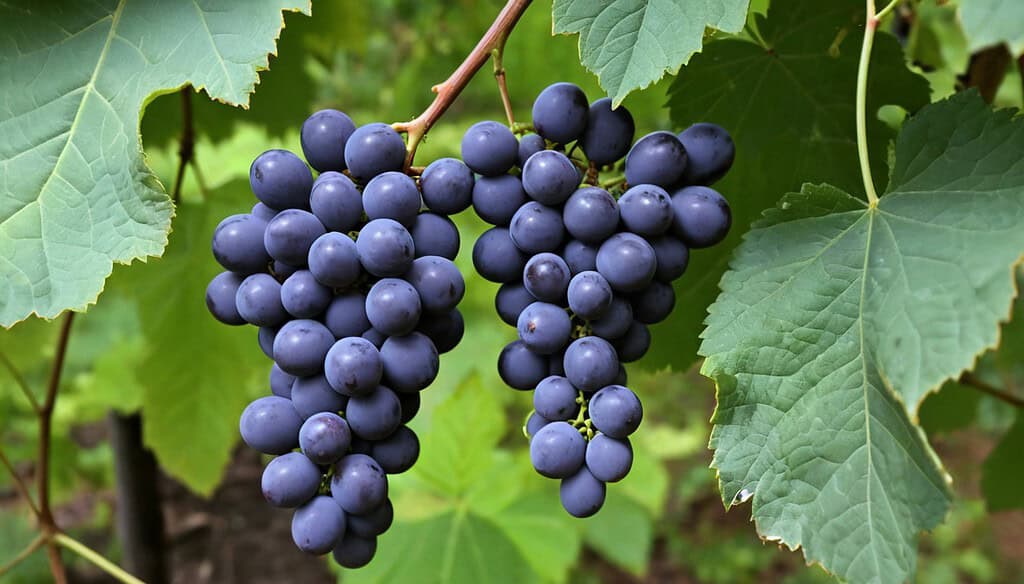
Concord grapes are a beloved variety of Vitaceae fruits, particularly popular for making juices, jellies, and wines. These grapes are distinctive for their deep purple color and aromatic, sweet flavor, which has made them a staple in American households. Concord grapes are often associated with the production of grape juice, most famously by brands like Welch’s, and are also used to make high-quality wines. Their rich, tart-sweet flavor and intense aroma set them apart from other grape varieties, making them an ideal choice for grape-based products.
The cultivation of Concord grapes is primarily concentrated in the northeastern United States, where the climate provides the right balance of warmth and moisture for the vines to thrive. Concord grape vines require fertile, well-drained soil and need to be carefully managed for optimal growth. Unlike some other Vitaceae fruits, Concord grapes are often cultivated on a commercial scale, with large vineyards dedicated to their production. The fruit is typically harvested in late summer or early fall, depending on the region’s climate, and is often picked by hand to ensure that only the ripest clusters are collected.
In terms of health benefits, Concord grapes are a powerhouse of antioxidants, particularly flavonoids and resveratrol. These compounds have been studied for their ability to promote cardiovascular health by improving blood vessel function and reducing inflammation. Concord grapes are also a good source of vitamins A and C, both of which support immune function, skin health, and overall well-being. Their high sugar content makes them particularly suitable for juicing, where their natural sweetness can be balanced with water or other fruit juices to create refreshing beverages.
While Concord grapes are incredibly popular and widely grown, they do face some challenges, particularly related to disease resistance. The vines are susceptible to fungal infections like downy mildew and powdery mildew, which can damage the fruit and reduce yield. Additionally, their thicker skins and high sugar content can make them more prone to attracting pests like fruit flies. Despite these challenges, Concord grapes remain a quintessential variety within the Vitaceae family, known for their delicious flavor and versatility in a wide range of products.
5. Vitaceae Fruits: Catawba Grapes
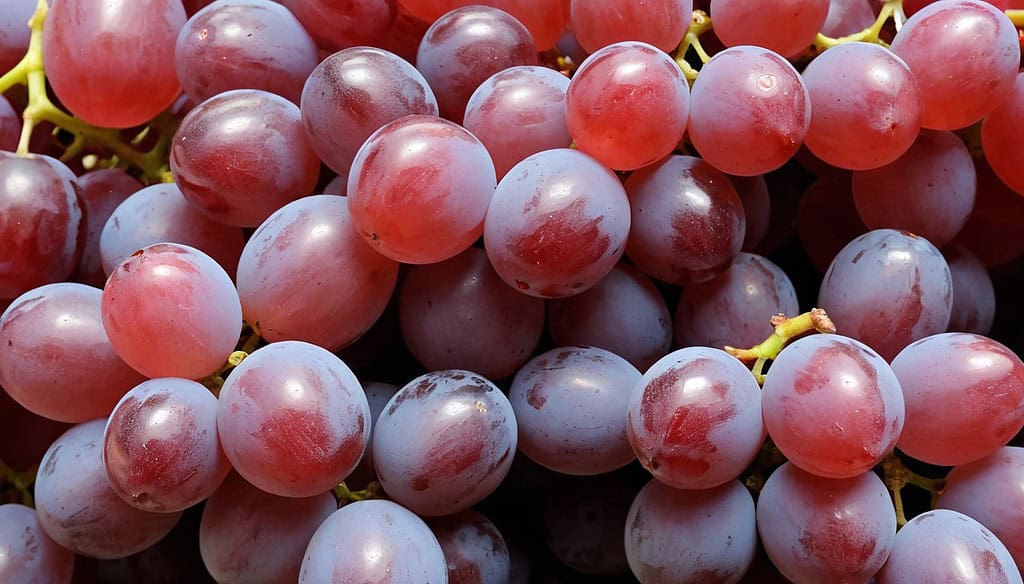
Catawba grapes are a variety of Vitaceae fruits that are native to the eastern United States, particularly in regions with warm, humid climates. They are known for their distinct pinkish-red color and unique, tart-sweet flavor, which makes them highly sought after for wine production and as a fresh fruit. Catawba grapes are typically small to medium in size, and their skins are thick compared to other grape varieties, which helps them retain their juiciness and flavor. The flesh inside is translucent and sweet, with a hint of acidity that adds to their overall appeal.
One of the primary uses of Catawba grapes is in the production of wine, where their balance of sweetness and acidity makes them ideal for creating light, fruity wines. Catawba wines are known for their floral and berry-like aromas, making them popular among those who enjoy wines that are slightly sweeter. The grape’s versatility also makes it a good option for producing grape juice, jelly, and other products. While Catawba grapes are not as widely known as common table grapes, their role in the wine industry has earned them a place in both small and large-scale vineyards, particularly in the Midwest and Eastern United States.
Catawba grapes thrive in well-drained, fertile soils and benefit from regular exposure to sunlight, which enhances their sweetness and flavor. They tend to ripen in late summer or early fall, depending on the climate, and are typically harvested by hand to ensure that only the ripest grapes are selected. These grapes are relatively resistant to pests and diseases, making them a reliable option for growers in areas prone to grapevine diseases. In terms of nutritional benefits, Catawba grapes are rich in antioxidants like flavonoids and resveratrol, which are known for their heart-healthy properties and potential anti-inflammatory effects. As part of the Vitaceae family, Catawba grapes contribute to the diversity of grape varieties, each offering distinct qualities and uses.
6. Vitaceae Fruits: Scuppernongs
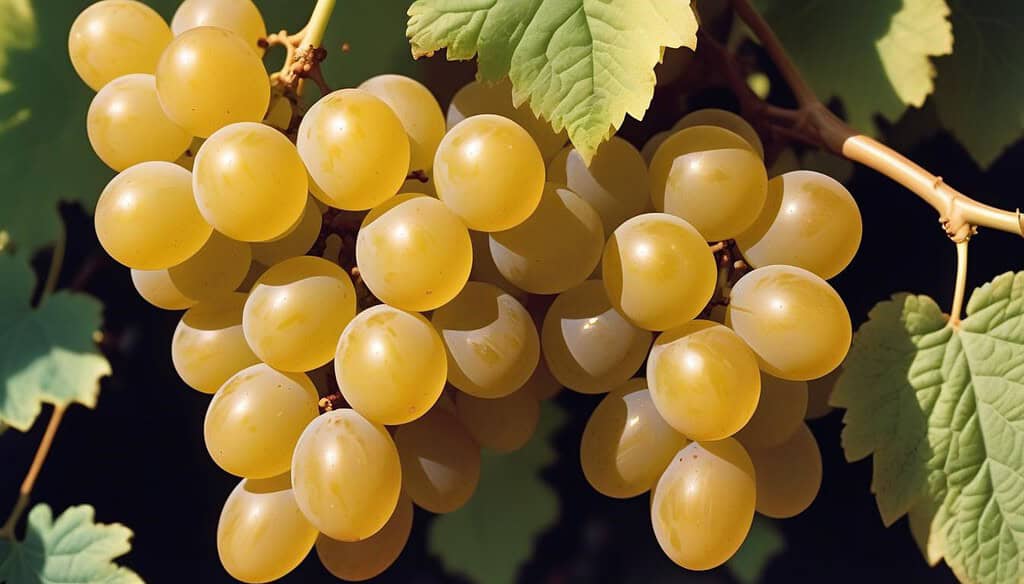
Scuppernongs are a variety of Vitaceae fruits that are closely related to muscadines, with which they share the same species but are distinguished by their golden-yellow or bronze color. Native to the southeastern United States, Scuppernongs are a type of muscadine grape, but they stand out due to their larger size and distinctive color. They are known for their smooth, thick skin and sweet, rich flavor, which varies from mildly sweet to robust, depending on ripeness. Scuppernongs are often regarded as one of the oldest cultivated grape varieties in America, and they have a strong cultural presence in the region.
Like muscadines, Scuppernongs are resistant to pests and diseases, which makes them easier to grow in their native environment. These grapes grow best in hot, humid conditions, and their vines thrive in sandy, well-drained soils. Scuppernongs are often harvested later in the season than other grape varieties, typically in late summer or early fall, when the grapes are fully ripe. The thick skin of Scuppernongs can be tough, so the fruit is often consumed fresh, but it is also used to make jellies, wines, and other products. Scuppernong wine, in particular, is highly regarded for its full-bodied, sweet flavor, and it holds a special place in southern winemaking traditions.
Scuppernongs are also celebrated for their health benefits, as they contain high levels of antioxidants, particularly resveratrol, which is associated with a range of health benefits, including anti-aging and heart health properties. The fruit also contains vitamin C and dietary fiber, which are beneficial for immune function and digestive health. While Scuppernongs are less widely cultivated outside the southeastern United States, their rich history and unique flavor make them a beloved variety of Vitaceae fruits in local markets and traditional dishes.
7. Vitaceae Fruits: Isabella Grapes
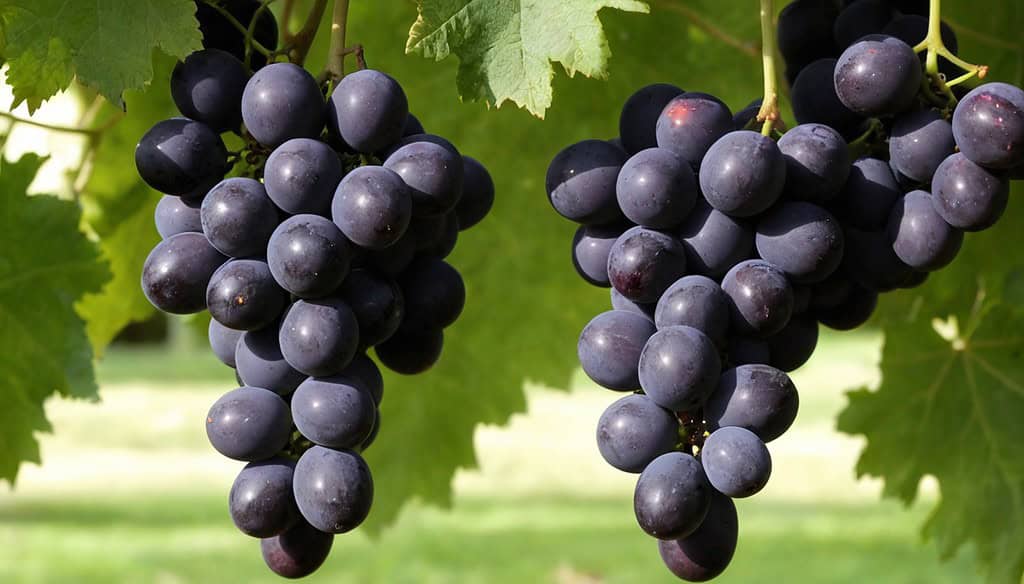
Isabella grapes are a unique variety of Vitaceae fruits, known for their distinctive dark purple to black color and intense flavor. Native to the eastern United States, they have been cultivated for centuries, especially in regions with warm, humid climates. Isabella grapes are small to medium in size, with a thin skin that contains a large number of seeds. Despite being less popular in mainstream markets compared to other grape varieties, Isabella grapes are highly valued for their use in winemaking, particularly in the production of homemade wines and jams.
The flavor of Isabella grapes is often described as robust and slightly musky, with a mix of sweet and tangy notes. They are typically enjoyed fresh but are also used in making juice, jelly, and wine. Isabella wine is known for its aromatic qualities and its bold, fruity taste, which makes it a favorite for those who enjoy wines that are on the sweeter side. Isabella grapes are also often used in traditional recipes, where they are cooked down into preserves or used as a filling for pies and pastries.
In terms of cultivation, Isabella grapes thrive in similar conditions to other Vitaceae fruits, requiring full sunlight and well-drained soil for optimal growth. The vines are vigorous, producing high yields each year, although they are more susceptible to diseases such as powdery mildew and black rot. This makes them somewhat more challenging to grow on a large scale, although they are still cultivated in some areas for their unique flavor and historical significance. Nutritionally, Isabella grapes are rich in antioxidants, including anthocyanins and flavonoids, which have been linked to various health benefits, including improved circulation, reduced inflammation, and protection against certain chronic diseases. Their high levels of vitamin C and potassium further contribute to their health-promoting properties.
Despite their lesser commercial availability, Isabella grapes remain an important part of the Vitaceae family and a cherished fruit among those who appreciate their bold taste and cultural significance.
8. Vitaceae Fruits: Pinot Noir Grapes
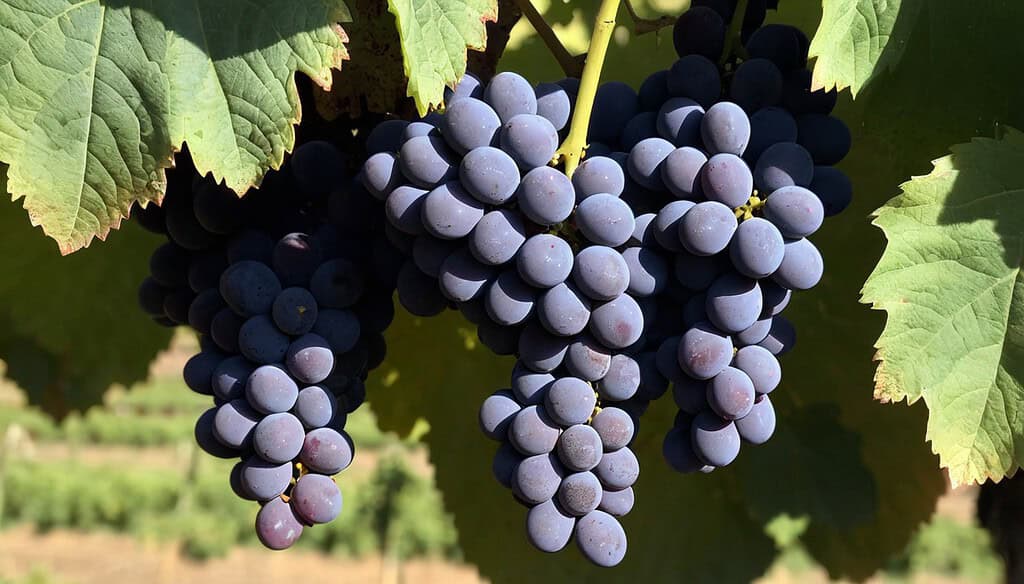
Pinot Noir grapes are one of the most well-known and revered varieties of Vitaceae fruits, particularly prized for their role in fine wine production. Originating in the Burgundy region of France, Pinot Noir grapes are the foundation of some of the world’s most sought-after red wines. The grapes are small, with thin skins and a delicate structure, making them a challenging variety to grow but highly rewarding for skilled winemakers. The flavor of Pinot Noir grapes is complex, offering a balance of fruitiness with earthy undertones, and the wine produced from them is known for its subtlety and elegance.
Pinot Noir grapes thrive in cooler climates, which is why they are commonly found in regions such as Burgundy, Oregon, and parts of California. These grapes require careful attention to soil conditions, temperature, and vine management to produce the best-quality wine. The difficulty in cultivating Pinot Noir vines is often attributed to their sensitivity to changes in weather, making them more susceptible to fungal diseases and pests. However, the distinct flavors and aromatic qualities that Pinot Noir grapes produce make them a favorite among winemakers and wine enthusiasts alike.
The health benefits of Pinot Noir grapes are similar to other Vitaceae fruits, with high levels of antioxidants such as resveratrol and flavonoids. These compounds are thought to contribute to heart health by improving blood circulation and reducing inflammation. Pinot Noir grapes are also rich in vitamins and minerals, including vitamin C and potassium, which support immune function and promote overall well-being. Additionally, the moderate consumption of Pinot Noir wine has been linked to potential health benefits, such as improving cognitive function and reducing the risk of heart disease.
While Pinot Noir grapes are highly prized for wine production, their cultivation is not without challenges. The sensitivity of the vines to climate and pests means that they require careful management, often necessitating organic or sustainable farming practices to minimize environmental impact. Despite these challenges, Pinot Noir remains a symbol of high-quality winemaking and a distinguished member of the Vitaceae fruits.
Disclaimers: *This article is only for informational purposes.
**Do not make your important decisions based solely on the information provided in this article. Do your own research.
***Information in this article may vary or may get updated in the future.
****Contact a doctor or a medical professional for any medical emergency.
Read More Science and Space Articles
- 8 Incredible Rosaceae Fruits You Need to Discover
- 8 Amazing Citrus Fruits That Will Brighten Your Day
- 8 Non-CO₂ Greenhouse Gasses That Are Worst Than CO₂
- Chemistry: 8 Unique Ways to Become Efficient At It
- 8 Ways Water Crisis is Worsened by Global Climate Change
- 8 Amazing Ways Brain Anatomy is Altered by New Learning
- 8 Disastrous Ways Deforestation Destroys Biodiversity
- Mathematics: 8 Interesting Ways To Become Efficient At It
- 8 Worst Ways Global Climate Change Hurts The Impoverished
- Danger Of Environmental Damage: 8 Ways A Person Can Help
- Eradication Of Poverty: 8 Critical Ways Science Helps
- STEM Fields: 8 Important Reasons Why You Must Learn Them
- Making Your Kid Efficient At STEM Subjects: 8 Important Steps
- Making Your Kid Science Enthusiast: 8 Important Steps
- Becoming A NASA Aspirant: 8 Important Steps You Must Follow
- Top 8 Important Wellness Habits That You Must Follow
- Top 5 Amazing Whole Grains That Are Healthier Than Rice
- Indian Space Program: 8 Incredible Achievements
- China’s Space Program: 5 Amazing Accomplishments
- Discoveries by JWST: 10 Incredible Findings of The Telescope
- NASA’s MOXIE Creates O2: Big Step Towards Mars Colonization
- Top 5 Amazing Properties of Time That Defy Common Sense
- 10 Factors for Emergence of Intelligent Life in The Universe
- Space Science: 6 Vital Reasons Why We Should Invest in It
- Solar System: 10 Astonishing Uniqueness of our star system
- Our Universe: An Incredible Journey of 13.7 Billion Years
- Top 6 Solar System Objects That Might Destroy Life On Earth
- Certain End of The Universe: 4 Forces of Nature to Watch Out For
- Big Bang: An Incredible Start of Universe 14 Billion Years Ago


